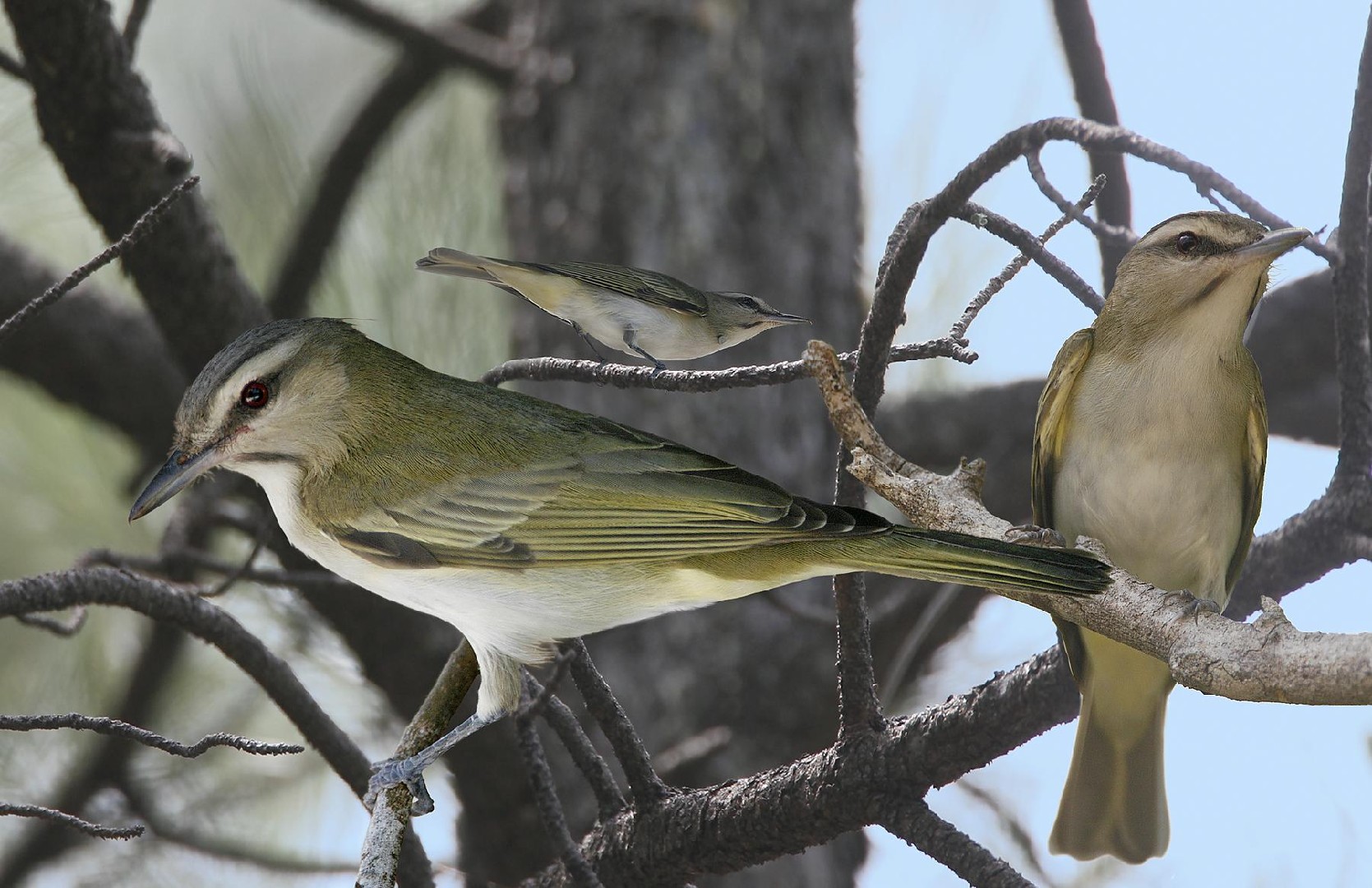Black-whiskered Vireo
A species of Vireos Scientific name : Vireo altiloquus Genus : Vireos
Black-whiskered Vireo, A species of Vireos
Botanical name: Vireo altiloquus
Genus: Vireos
Content
Description General Info
 Photo By Richard Crossley , used under CC-BY-SA-3.0 /Cropped and compressed from original
Photo By Richard Crossley , used under CC-BY-SA-3.0 /Cropped and compressed from original Description
This vireo is 14–15 cm in length, has a 25 cm wingspan and weighs 17–19 g. It has thick blue-grey legs and a stout bill. The adult black-whiskered vireo has dull olive-green upperparts and white underparts, with yellowish on the flanks and under the tail. It has red eyes and a grey-brown crown with faint dusky edges. There is a dark line through the eyes and a white eyebrow stripe. There is a distinctive black line (the "whisker") on the neck sides. Juvenile birds are similar, but have brown-red eyes. This species is similar to red-eyed vireo, but is duller and browner above, and is best distinguished by the black whisker mark. The song is a three-syllable whip, Tom Kelly, more abrupt than that of red-eyed vireo. The Florida race V. a. barbatulus is shorter-billed by 15% than the northern Caribbean subspecies V. a. bonairensis. The latter form has occurred in the US as a vagrant to Florida and Louisiana. 
Size
13-17 cm (5-6.5 in)
Life Expectancy
4 years
Nest Placement
Tree
Clutch Size
2 - 4 eggs
Feeding Habits
Black-whiskered Vireo's diet comprises both fruit and insects, with a preference for fruits compared to smaller sympatric vireo species. Foraging in mid to upper foliage, they glean insects and pluck fruits while traversing the canopy. Occasionally, they hover to capture insects but often seize them from foliage. Prey includes caterpillars, spiders, beetles, and other arthropods, while their frugivory centers on cecropia, figs, and other native fruits.
Habitat
Black-whiskered Vireo inhabit subtropical and tropical regions, thriving in low-altitude environments such as open deciduous woodlands, mangroves, and even cultivated areas rich in vegetation like sea-grape and gumbo-limbo trees. They adapt well to urban areas with native Caribbean flora and can be found in both limestone forests and montane regions up to 4,000 feet, although they rarely occupy drier zones. Proximity to water is a common feature of their preferred habitats.
Nest Behavior
Black-whiskered Vireo exhibits nesting behavior with the female building the nest, primarily during breeding season. The egg-laying pattern usually involves placing eggs in the constructed deep cup nest, following which both parents actively participate in the care of the eggs and feeding the young.
Nest Characteristics
Black-whiskered Vireo's nest is found 4-21 feet high, typically in a branch fork or on a horizontal limb of an evergreen tree like mangroves or mahogany. The nest is a deep cup made of dried grass, lichen, and spiderwebs lined with fine grass, rootlets, and palm fibers, measuring approximately 2.9 inches wide and 2.4 inches tall.
Dite type
Insectivorous
General Info
Feeding Habits
Bird food type
Bird Feeder Type

Small Hopper

Small Tube Feeder

Platform
Behavior
The black-whiskered Vireo engages in distinct territorial and mating rituals, including loud singing and elaborate threat displays involving puffing crown feathers, wing drooping, and tail spreading. Conflict is typically vocal rather than physical. Courting involves males chasing females and courtship feeding. Nest construction is a solo female task, closely overseen by singing males. Both sexes participate in incubation and rearing, combating brood parasites like Shiny Cowbirds. Additionally, black-whiskered Vireos serve as avian sentinels, sounding alarms at predator sightings. In non-breeding seasons, migratory black-whiskered Vireos integrate into mixed-species flocks, demonstrating a remarkable adaptability in their social behavior.
Species Status
Not globally threatened.
Scientific Classification
Phylum
Chordates Class
Birds Order
Perching birds Family
Vireos Genus
Vireos Species
Black-whiskered Vireo